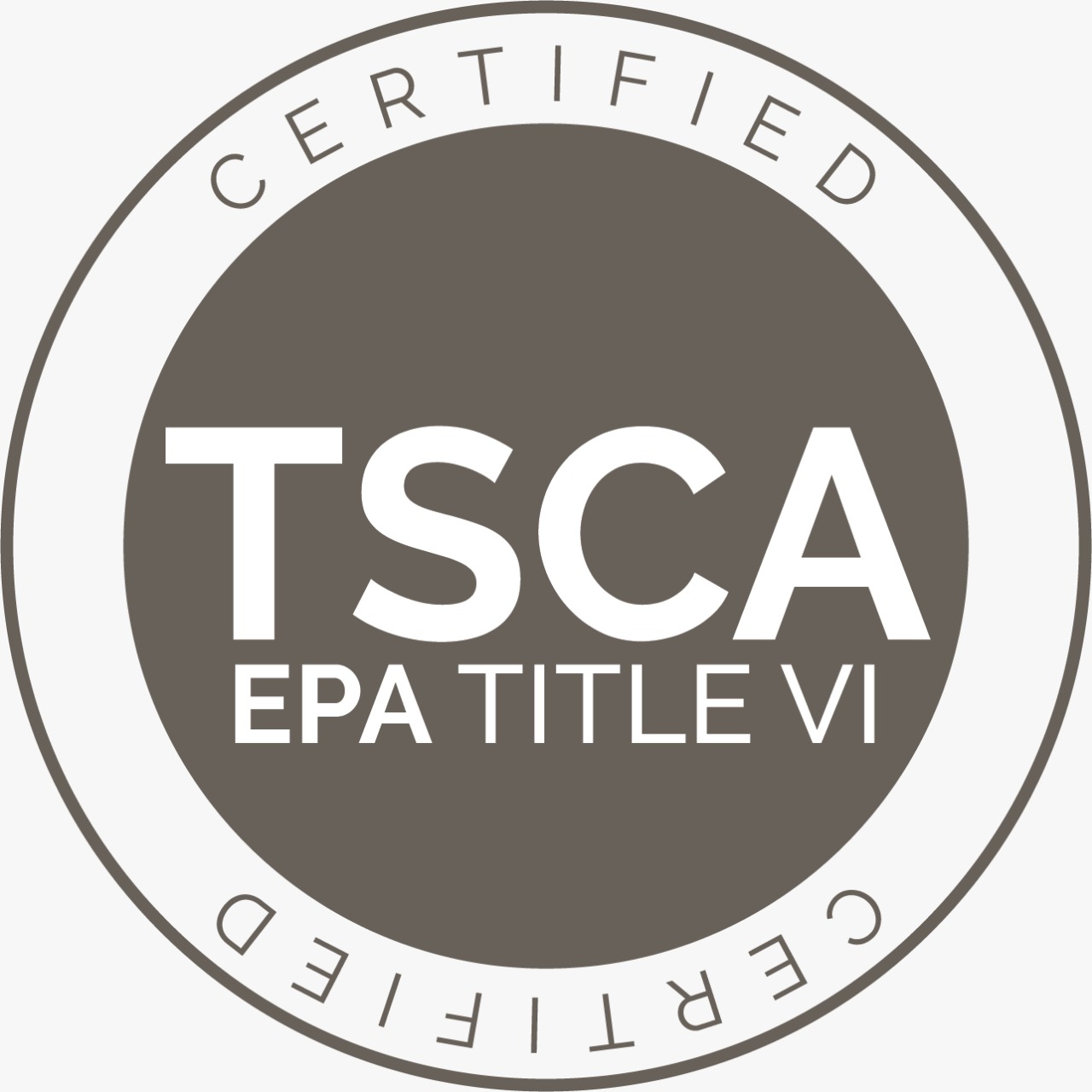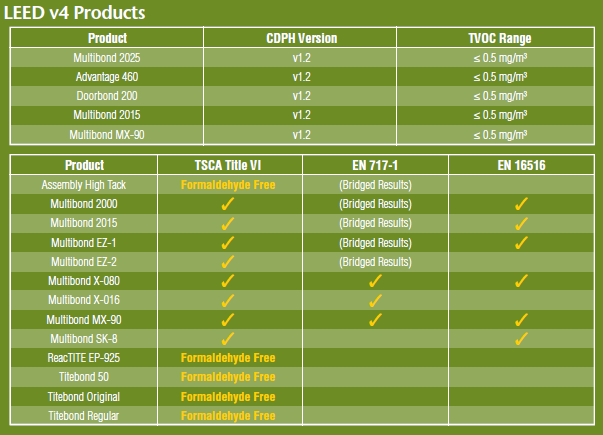
TSCA Title VI Emissions Standards:
40 CFR §770.10: Hardwood Plywood-Veneer Core = 0.05 ppm
Hardwood Plywood-Composite Core = 0.05 ppm
Medium Density Fiberboard = 0.11 ppm
Thin Medium Density Fiberboard = 0.13 ppm
Particleboard = 0.09 ppm
TSCA Title VI Standard
EPA TSCA Title VI Third-Party Certifiers must test their panel producers’ composite wood products quarterly using large chamber test method ASTM E1333–14 or, with a showing of equivalence, the small chamber test method ASTM D6007-14. The final rule does not require the testing of component parts, finished goods, or articles containing regulated composite wood products after the initial testing of the composite wood material. Beginning March 22, 2024, non-exempt laminated products will be designated as hardwood plywood and thus require testing and certification.
Manufacturers of composite wood products who use no-added formaldehyde (NAF) or ultra low-emitting formaldehyde (ULEF) based resins can submit an application to CARB to seek a two year reduced testing and certification exemption. Research conducted during the promulgation of the standard clearly showed that polyvinyl acetate and soy-based adhesives had negligible levels of formaldehyde during chamber testing. In fact, the EPA noted both resins as being candidates for NAF-based resins and eligible for the aforementioned NAF-based resin exemption.
While formaldehyde-free adhesives are going to be preferred to other adhesives to meet the formaldehyde requirements, it is not mandatory that adhesives used be formaldehyde-free. Many low-emitting formaldehyde adhesives will pass the strictest limit of 0.5 ppm (HWPW) of the standard. One key point, however, is that chamber testing is performed on wood with the adhesive; the wood almost always contains some natural amount of residual formaldehyde. Fortunately, Franklin considered this in the development of its line of low-emitting formaldehyde wood adhesives.
Europe’s Formaldehyde Regulations
The European Union promulgated European Standard EN 13986 in 2004 that limits formaldehyde emissions from wood-based panels used in construction. Wood-based panels include solid wood panel, laminated veneer lumber, plywood, oriented strand board, resin-bonded particleboard, cement-bonded particleboard or fiberboard, and they cannot exceed Emission class E1 formaldehyde level of 0.10 ppm (listed as 0.124 mg/m3). Determination of formaldehyde release is referenced in Annex B of the Standard and includes chamber test method EN 717-1, gas analysis method EN 717-2, and perforator method EN 120.
Germany announced in 2018 that they would be adopting DIN EN 16516 as the new reference method for formaldehyde emissions from coated and uncoated wood-based materials. This method introduced what are considered more realistic chamber test conditions to accurately gauge formaldehyde emissions. In addition, the new analytical processes essentially result in a 50% decrease in the current formaldehyde emissions limit value. This means that the existing EN 717-1 method can still be used in parallel with the DIN EN 16516 standard, but EN 717-1 formaldehyde results must be multiplied by a factor of 2. The use of DIN EN 16516 and doubling EN 717-1 results became effective in Germany January, 1, 2020.
Franklin Adhesive Products
The LEED table below illustrates our adhesives that meet current LEED low emitting materials requirements discussed earlier in this brochure. Next, the second table lists a sample of our adhesives and compliance with TSCA Title VI and EU formaldehyde standards. This table serves only as a guide as TSCA Title VI and other international regulations, require the composite wood manufacturer to conduct third party testing of your substrate with the adhesive you are using, to show compliance with a particular regulation.

If you would like further guidance on using our products to meet TSCA Title VI standards or additional testing information, please feel free to contact us at 1.614.443.0241.
This brochure was printed from the most current information available at the time. Please refer to the current TSCA Title VI and LEED guidelines for complete accuracy.